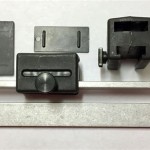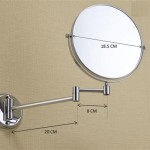Fisheye Mirror for Car: Enhancing Visibility and Safety
A fisheye mirror, also known as a wide-angle mirror, is a specialized rearview mirror designed to provide drivers with a wider field of view than standard rearview mirrors. These mirrors utilize a convex lens that distorts the image, expanding the viewing angle to include a larger portion of the surrounding area. This expanded view can be incredibly beneficial for drivers, especially in situations where visibility is limited, such as blind spots or tight parking spaces.
Enhanced Visibility for Safety
Fisheye mirrors are primarily used to enhance visibility and potentially improve safety on the road. The wider field of view provided by these mirrors allows drivers to see more of their surroundings, including vehicles, pedestrians, and obstacles that might otherwise be hidden from view. This increased awareness can be particularly helpful in situations such as:
- Changing lanes: Fisheye mirrors help drivers to see vehicles in the adjacent lane before changing lanes, reducing the risk of accidents.
- Merging onto highways: The expanded view allows drivers to see oncoming traffic and other vehicles merging from adjacent lanes, facilitating safer merging.
- Parking in tight spaces: Fisheye mirrors offer a wider view of the area behind the car, making it easier for drivers to maneuver in tight spaces and avoid collisions with obstacles.
- Driving in urban areas with heavy traffic: The widened field of view helps drivers to spot pedestrians, cyclists, and other vehicles that might be obscured from view by parked cars or traffic.
By providing a more comprehensive view of the surroundings, fisheye mirrors can contribute to a safer driving experience by reducing blind spots and increasing driver awareness.
Types of Fisheye Mirrors
Fisheye mirrors come in various forms and sizes, each designed to meet specific needs and preferences. Some common types include:
- Clip-on mirrors: These small, adhesive mirrors attach directly to the existing rearview mirror, offering a wide-angle view without replacing the main mirror.
- Universal stick-on mirrors: These mirrors are designed to be attached to various surfaces using strong adhesive, allowing for placement on different locations in the car, such as the dashboard, side window, or rear window.
- Replacement mirrors: These mirrors are designed to replace the entire rearview mirror, offering a wider field of view and sometimes additional features, such as dimming capabilities or built-in cameras.
- Blind spot mirrors: These small, convex mirrors are typically attached to the side mirrors, providing a wider view of the blind spot areas. They offer a more focused view compared to full-size fisheye mirrors.
The type of fisheye mirror chosen will depend on individual needs and preferences. Clip-on mirrors are a cost-effective option for temporary use, while replacement mirrors offer a more permanent and integrated solution.
Considerations and Limitations
While fisheye mirrors offer numerous benefits, it's crucial to be aware of some considerations and limitations:
- Image distortion: The convex lens used in fisheye mirrors distorts the image, making objects appear smaller and further away than they actually are. This distortion can be disorienting, especially for drivers not accustomed to these mirrors.
- Limited peripheral vision: Fisheye mirrors provide a wider view but often have a narrower peripheral vision compared to standard rearview mirrors. This means the driver's overall field of view can be compromised in certain directions.
- Placement and adjustment: Proper placement and adjustment of the fisheye mirror are crucial for optimal performance. Incorrect positioning can lead to obstructed views or distorted images.
- Compatibility: Some fisheye mirrors are not compatible with all vehicles, particularly those with specific rearview mirror designs or limitations.
It's essential to consider these limitations and ensure the chosen fisheye mirror is suitable for individual needs and vehicle specifications.
Overall, fisheye mirrors offer a valuable addition to a car's safety features by enhancing visibility and driver awareness. However, it's crucial to use them responsibly, understanding their limitations and ensuring proper placement and adjustment for optimal results. Drivers should familiarize themselves with the distorted image and consider the trade-off between wider view and the potential for disorientation.

Why Aftermarket Blind Spot Mirrors For Your Car Are Actually Unsafe Drivespark

How To Use Blind Spot Mirrors Yourmechanic Advice

How To Remove Blind Spot Mirrors In The Garage With Carparts Com

Best Blind Spot Mirrors Check It The Truth About Cars

Utopicar Blind Spot Convex Car Mirror Model Bsm017 2pack Com

844443d1321768140 10 Reasons Ditch Stick Fish Eye Convex Blind Spot Mirror Img 9001 Jpg

12 Best Blind Spot Mirrors For Your Car 2024 And Side View

Gearup Adjustable Blind Spot Mirror Round 50mm Gubs6 Gear Up Repco New Zealand

The Best Blind Spot Mirrors

O27ds Top Car Blind Spot Mirror Outside Driving School Additional Reduces Risk Of Accident Makes Reversing And Toter Winkel Spiegel Auto








